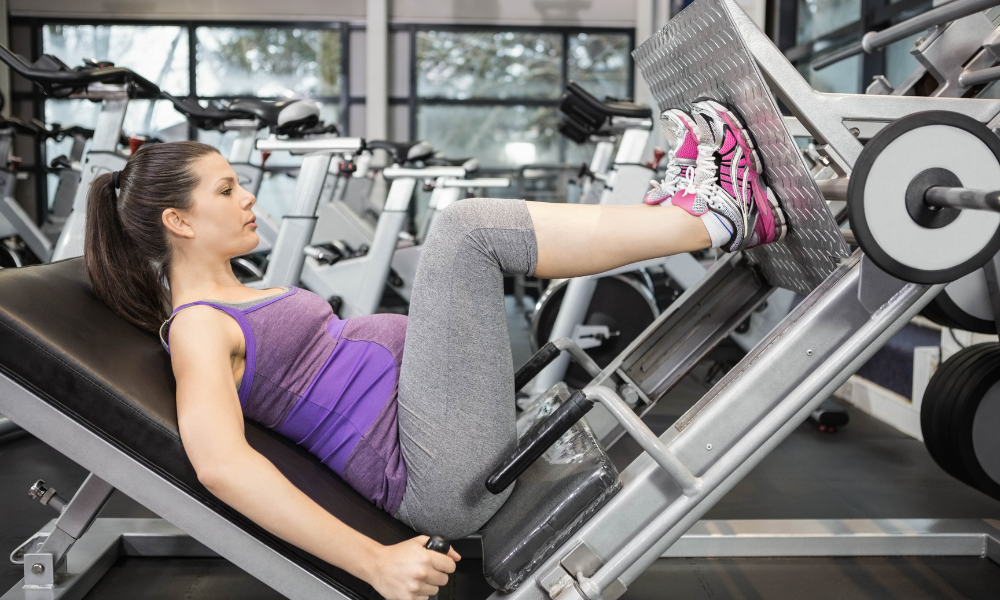What Are Weight Bearing Exercises?

If you're looking to improve your overall health and fitness, incorporating weight-bearing exercises into your routine can be incredibly beneficial.
These exercises, also known as weight-bearing or resistance exercises, are activities that force your body to work against gravity while supporting your body weight.
They are crucial for building and maintaining bone density, muscle strength, and overall physical function.
In this article, we'll dive deep into the world of weight-bearing exercises, exploring their benefits, different types, and how to incorporate them into your fitness regimen.
Understanding Weight Bearing Exercises
Definition and Importance
Weight-bearing exercises are activities that require your body to work against the force of gravity while supporting your own weight.
They include any movement where bones and muscles are working in tandem, making them crucial for maintaining bone health and overall strength.
How Weight Bearing Exercises Work
When you perform weight-bearing exercises, your bones experience small amounts of stress.
This stress triggers your body to build more bone cells, thus increasing bone density over time.
It also stimulates the muscles attached to these bones, leading to improved muscle strength and endurance.
Benefits of Weight Bearing Exercises
Improved Bone Health
Weight-bearing exercises play a pivotal role in promoting healthy bones, making them an excellent strategy for preventing conditions like osteoporosis.
By engaging in these exercises regularly, you stimulate bone growth, increase bone density, and reduce the risk of fractures.
Muscle Strength and Endurance
Engaging in weight-bearing exercises helps you build and tone muscles throughout your body.
This enhanced muscle strength not only supports your bones and joints but also improves your overall physical performance.
Enhanced Joint Stability
Weight-bearing exercises target the muscles surrounding your joints, improving their stability and reducing the risk of injury.
This is particularly important as you age and your joints become more vulnerable.
Metabolism Boost
Weight-bearing exercises require more energy, which leads to an increased metabolic rate.
This boost in metabolism can contribute to weight management and improved overall fitness.
Different Types of Weight Bearing Exercises
Bodyweight Exercises
Bodyweight exercises, such as push-ups, squats, and lunges, rely on your own body weight as resistance.
These exercises are versatile, effective, and require minimal equipment.
Free Weights
Free weight exercises involve the use of external weights, such as dumbbells and barbells.
These allow for greater customization and can target specific muscle groups.
Resistance Bands
Resistance bands provide a controlled amount of resistance and are excellent for both strength training and rehabilitation.
They are portable and suitable for various fitness levels.
Weight Machines
Weight machines are commonly found in gyms and offer guided movement patterns.
They are particularly useful for beginners, as they help maintain proper form and reduce the risk of injury.
Getting Started with Weight Bearing Exercises
Assessing Your Fitness Level
Before embarking on a weight-bearing exercise routine, it's essential to assess your current fitness level.
This will help you choose exercises that are appropriate for your abilities and set realistic goals.
Setting Clear Goals
Define what you want to achieve through weight-bearing exercises.
Whether it's building muscle, improving bone density, or increasing overall fitness, having clear goals will guide your workout plan.
Designing Your Workout Plan
Create a well-rounded workout plan that includes a variety of exercises targeting different muscle groups.
Balance strength training with cardiovascular activities for optimal results.
Common Mistakes to Avoid
Overtraining
Overtraining can lead to burnout, injuries, and hindered progress. Remember that rest and recovery are essential components of a successful fitness regimen.
Incorrect Form
Maintaining proper form during weight-bearing exercises is crucial to prevent injuries. If you're unsure about your form, consider working with a fitness professional.
Neglecting Recovery
Allow your muscles time to recover between workouts. This is when your body repairs and strengthens itself, leading to better results in the long run.
Incorporating Weight Bearing Exercises into Your Routine
Full-Body Workouts
Full-body workouts engage multiple muscle groups in a single session. This can save time and provide efficient results for those with busy schedules.
Split Workouts
Splitting your routine to focus on specific muscle groups on different days can prevent overexertion and promote targeted muscle growth.
Cardio and Weight Bearing Exercises
Combining weight-bearing exercises with cardiovascular activities can enhance your overall fitness level and promote heart health.
Tips for Success and Safety
Warm-Up and Cool-Down
Always start your workout with a proper warm-up to prepare your muscles and joints. Cooling down after exercise helps prevent muscle soreness.
Gradual Progression
Avoid the temptation to push yourself too hard too quickly. Gradually increase the intensity of your exercises to prevent injuries.
Listen to Your Body
Pay attention to how your body responds to different exercises. If you experience pain or discomfort, stop and seek professional advice.
Conclusion
Incorporating weight-bearing exercises into your fitness routine can yield a wide range of benefits, from improved bone health to enhanced muscle strength.
By understanding the different types of weight-bearing exercises and following best practices, you can work towards achieving your fitness goals in a safe and effective manner.
Frequently Asked Questions (FAQs)
Can weight-bearing exercises help with weight loss?
Yes, weight-bearing exercises can aid in weight loss by increasing your metabolic rate and promoting muscle growth, which burns more calories.
Are there any age restrictions for these exercises?
Weight-bearing exercises can be beneficial for individuals of various ages.
However, it's advisable to consult a healthcare professional, especially if you have preexisting medical conditions.
Can I do weight-bearing exercises at home without equipment?
Absolutely! Many effective bodyweight exercises can be performed at home without the need for specialized equipment.
How often should I incorporate weight-bearing exercises into my routine?
It's recommended to engage in weight-bearing exercises at least 2-3 times a week for optimal results.
Can these exercises help prevent osteoporosis?
Yes, regular weight-bearing exercises can contribute to maintaining strong and healthy bones, reducing the risk of osteoporosis.
However, it's important to combine them with a balanced diet rich in calcium and vitamin D.
